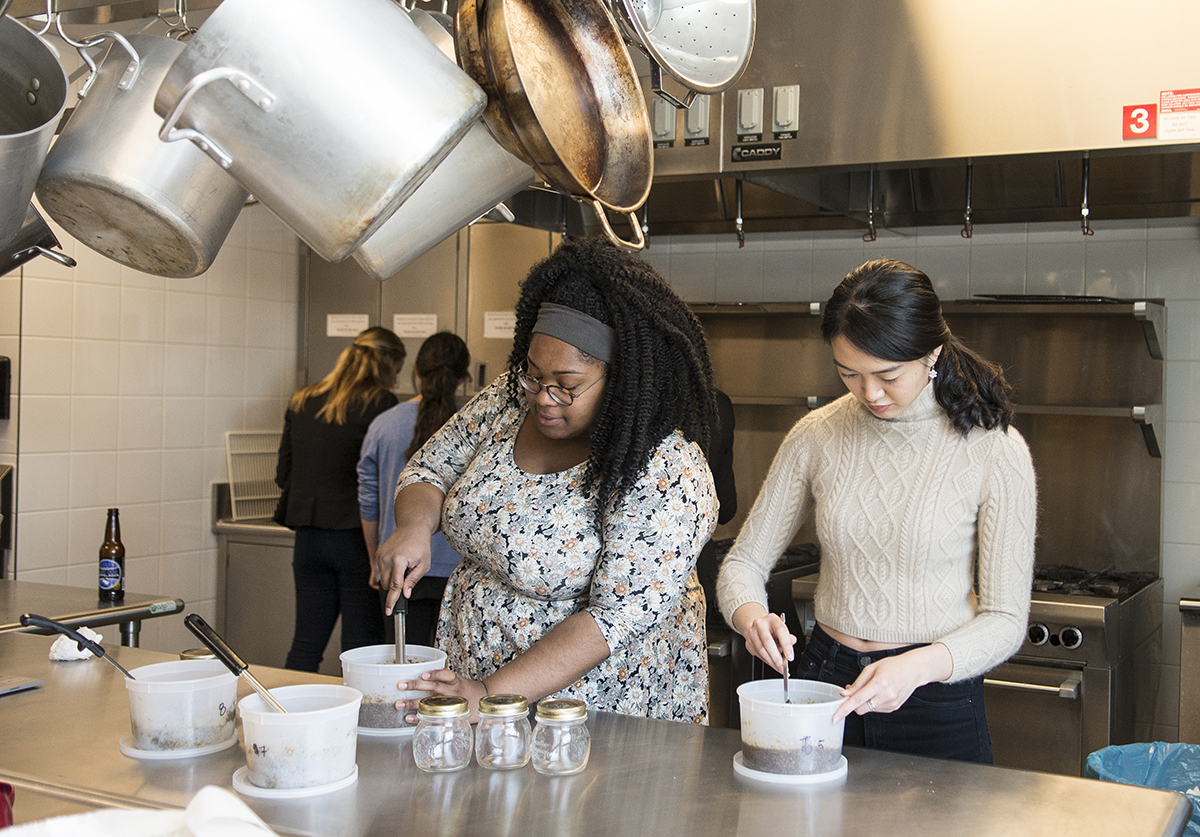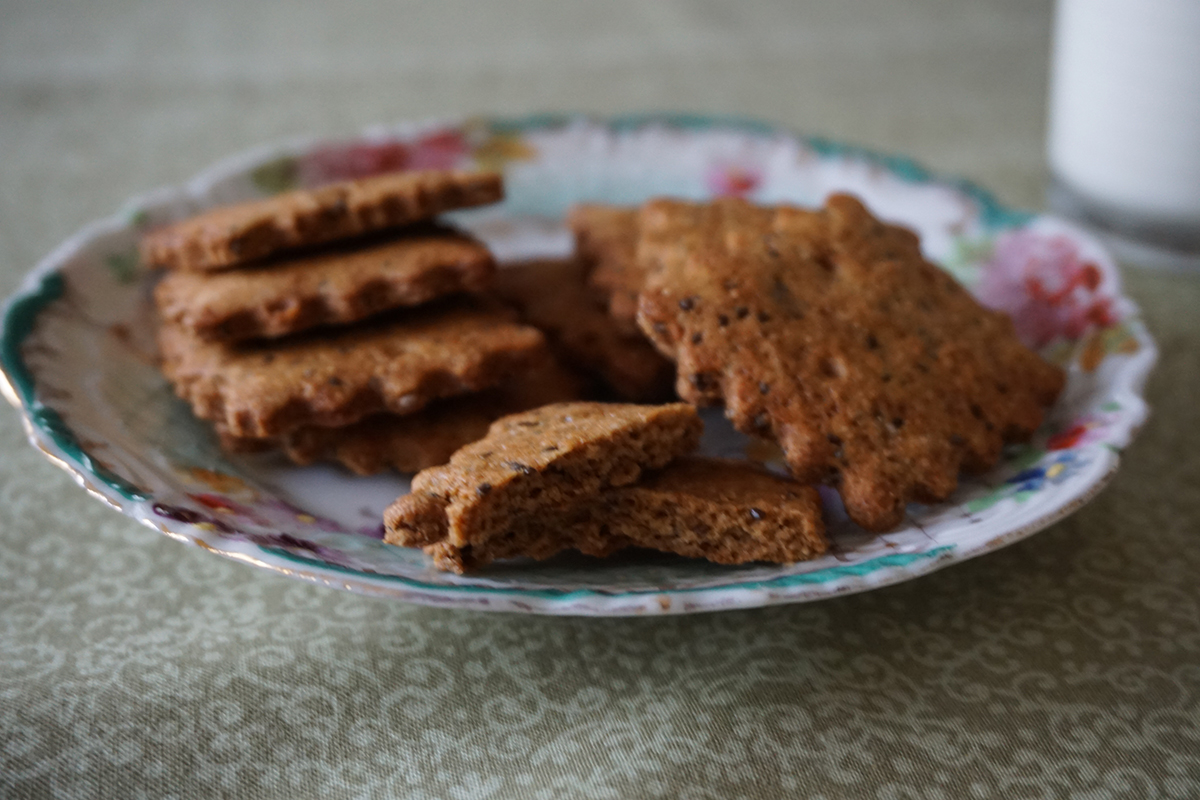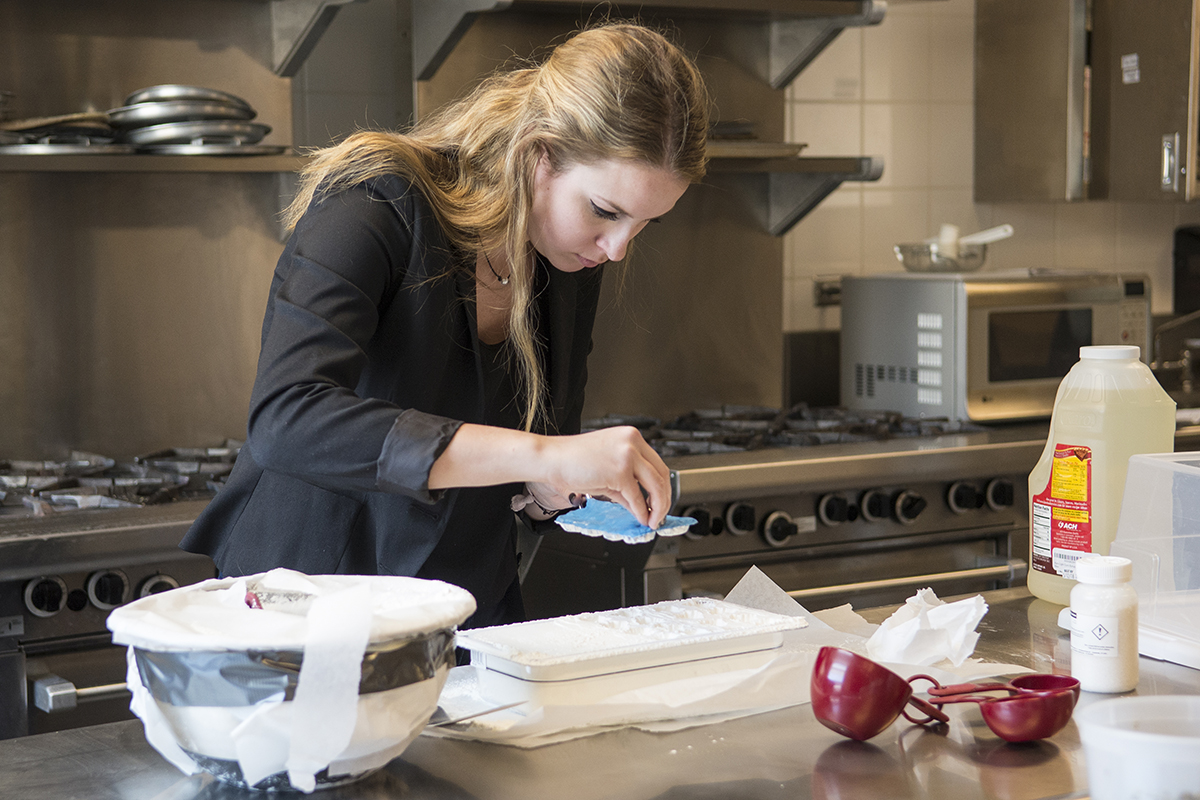Food science seniors sweeten flourishing businesses
By Blaine Friedlander

The organic graham crackers must stay fresh in the packaging, the wine-infused mustard requires shelf stability, and the all-natural frozen Greek yogurt needs a safety plan. Welcome to Food Science 4000, the capstone course where Cornell seniors draw on their knowledge to aid New York food businesses and strengthen enterprises.
Business owners are thankful. “If I had done this privately, the food safety HACCP (hazard analysis and critical control points) plan would have cost me thousands of dollars to develop, so having these students help me creates all kinds of opportunities – for a small business – as it has exponential, beneficial effects,” said Alicia Dargan, owner of the Queen Bee Creamery in Syracuse, New York.
Dargan wants to take her all-natural frozen Greek yogurt to the wholesale level, so she needed tasty, natural ingredients to keep it shelf stable and she needed a certified food safety plan, suggested by the student-consultants. Students Genevieve Sullivan ’16, Danielle Corrado ’16, Richard DelPlato ’16 and Brenda Margolies ’16 offered their scientific and marketing expertise. All food science undergraduates are HAACP and Safe Quality Food, or SQF, certified.
“The HACCP plan is a budget buster, and the Cornell food science students gave my little business an opportunity to go from small business to a medium-sized business. They have given me a great opportunity, a truly great gift,” said Dargan, whose frozen yogurt will soon be available in Syracuse and Finger Lakes region retail locations for test marketing.
“This is more than just a class,” said Dargan. “It’s a community partnership in creating a sustainable, developing small business – we’re now in a position to create jobs. The safety certification alone now makes me legit to major retailers and affords me the opportunity to present my product to large grocery leaders and regional food service distributors. For my business, all the stars lined up … and we’re working at a new level.”

Chang (Cy) Lee, professor of food science, teaches the class with the assistance of Marin Cherry, undergraduate program coordinator, and Ariel Buehler, graduate student teaching assistant. Cherry coordinated the initial call for projects and paired the students with regional businesses.
Thanks to a grant from Engaged Cornell, the class has morphed from weekly lectures to hands-on learning.
“This is a chance for the students to apply everything they’ve learned for the past three and a half years to solve real-world problems,” Lee said. “The students have been through chemistry, microbiology, engineering, food safety and marketing. This class brings it all together – to find solutions to bona fide food-business problems. … It’s 100 percent hands-on. It’s an exciting course; I really enjoy teaching it.”
Packed with nutrition
Ann Marie Stone, owner of gimmecookie in Johnson City, New York, sought technical assistance on packaging for her organic graham crackers to sell them retail. As she worked with food science seniors, the project evolved into a new product: Snackin’ Grahams, packed with nutrition – thanks to Haley Finnerty ’16, Samantha VanWees ’16 and Caroline Kesselem ’16.

Stone test marketed Snackin’ Grahams at her farmers market location in Otsiningo Park in Binghamton, New York – selling out each time. “The students and I worked very well together, as each of them brought a different talent to the table,” Stone said. “That’s what really helped move this along.”
Wine-infused mustard
Divided into eight teams, students met with food business owners, then began to braise, blend, baste and boil all kinds of testable concoctions. One group sought ways to improve the taste of food for cancer patients at a regional hospital. Another group created a maple candy recipe for the state’s maple industry.
Students worked with Dano’s Heuriger on Seneca, in Lodi, New York, to create a retail version of their wine-infused mustard, which contains no added preservatives or stabilizers.
“The alcohol in the wine, the acetic acid in the vinegar, the salt and the antimicrobial properties of mustard seeds themselves made it shelf stable,” said Lauren Poindexter ’16, whose team made 10 batches of five different formulations over seven weeks, all the while conducting more research and brainstorming. In addition to Poindexter, the team members were Camille Kapaun ’16 and Junyi Chen ’16.
“The mustard is spicy and slightly salty,” Poindexter said. “The flavoring of the wine is present, but subtle, adding some complexity and interesting flavor that makes pairing with foods exciting. Another mustard we made, the beer mustard, has the same spice and salt profile, but it is more nutty because of the beer and garlicky,” she said.
Poindexter explained: “Our group learned how to exploit the biological and physiochemical properties of food to achieve an end goal. The food science curriculum prepares us for this theoretically, but the physical application solidified many concepts for me, really helping to realize the benefits of a capstone course.”
Media Contact
Get Cornell news delivered right to your inbox.
Subscribe